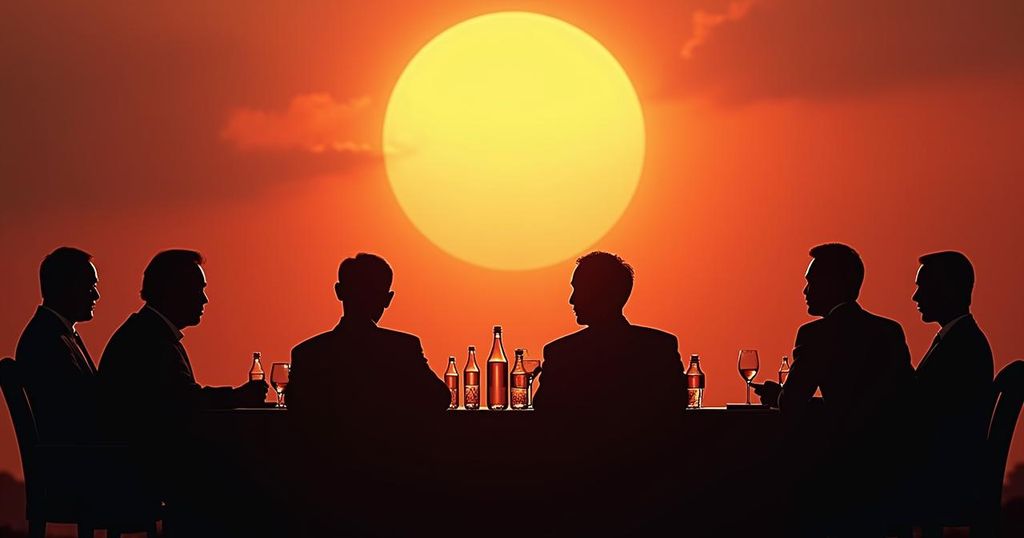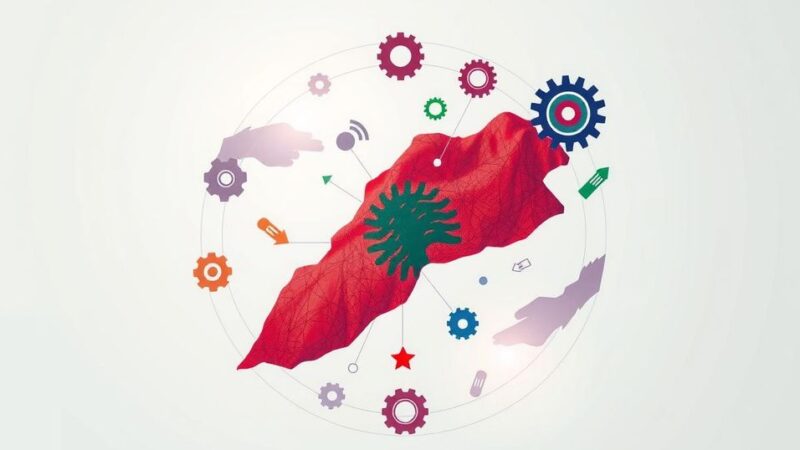Southeast Asian leaders convened in Vientiane for an annual summit addressing Myanmar’s civil conflict and South China Sea tensions. The summit, attended by 10 ASEAN member states and global powers, aims to foster dialogue amidst ongoing geopolitical challenges. Key discussions involve the roles of China and the US, as well as the crisis in Myanmar, which continues to impede ASEAN’s credibility. New leadership in several member states poses both opportunities and challenges as regional dynamics evolve.
Southeast Asian leaders convened in Vientiane, Laos, for an annual summit dedicated to addressing the ongoing civil conflict in Myanmar and the escalating territorial disputes within the South China Sea. These issues have longstanding implications for the credibility of the Association of Southeast Asian Nations (ASEAN). The 10 ASEAN member states, which include Indonesia, Thailand, and Singapore among others, will also engage in discussions with major global powers such as China, the United States, and Russia, all vying for greater influence in the region. There is speculation that discussions may extend to the worsening violence in the Middle East, despite Southeast Asia only experiencing indirect repercussions. The summit commenced with Lao Prime Minister Sonexay Siphandone welcoming new leaders from Thailand and Singapore, emphasizing the need for collaboration among ASEAN members to tackle various geopolitical and economic challenges. Mr. Siphandone stated, “We help one another, and work together the ASEAN way.” New leadership is present with Thailand’s Paetongtarn Shinawatra, the youngest leader in ASEAN at 38, and Singapore’s Lawrence Wong taking over from Lee Hsien Loong. Vietnam is represented by Prime Minister Pham Minh Chinh, following President To Lam’s recent appointment. Amidst these changes, President Joko Widodo of Indonesia is not attending, delegating Vice President Ma’ruf Amin. U.S. Secretary of State Antony Blinken is taking the place of President Joe Biden, while China sends Premier Li Qiang. The deterioration of U.S.-China relations, particularly regarding the South China Sea, is expected to feature prominently in the discussions. Dan Kritenbrink, a senior U.S. diplomat for Asia, noted that various issues pertaining to China will permeate the ASEAN discussions, stating, “A number of (China)-related issues are likely to come up in the context of the ASEAN meetings, including the situation in the South China Sea”. The South China Sea remains a contentious area where ASEAN member states like Vietnam, the Philippines, and Malaysia contend with China’s sovereignty claims. Negotiations for a code of conduct have therefore been ongoing but remain slow. Meanwhile, clashes between Chinese and Philippine vessels and allegations of assaults on Vietnamese fishermen indicate a rise in tensions. Additionally, the ongoing crisis in Myanmar, following the military coup that ousted Aung San Suu Kyi’s government, further complicates ASEAN’s credibility, with nearly 6,000 fatalities and over 3 million people displaced since February 2021. Although there was an agreement on a peace plan, the junta has failed to implement it, continuing to confront pro-democracy forces. Myanmar’s representation at the summit comes in the form of its Foreign Ministry’s permanent secretary, marking the first high-level representation in three years. Lina Alexandra, a senior researcher, remarked that allowing a representative from Myanmar could signal ASEAN’s fatigue in managing the crisis. Overall, notable breakthroughs in resolving these pressing issues appear unlikely as member states prioritize their national interests over regional collaboration.
The ASEAN summit occurs annually and serves as a critical platform for regional discourse on pressing issues that affect member states and their relationships with global powers. The current summit’s focus on Myanmar and the South China Sea highlights the dual nature of regional stability concerns and the challenges faced by ASEAN as a collective body. ASEAN has historically dealt with issues of sovereignty and territorial integrity, particularly concerning the assertive actions of China in the South China Sea, which challenges the interests of multiple ASEAN members. Additionally, the ongoing conflict in Myanmar presents a stark reminder of the limits of ASEAN’s influence when dealing with internal governance issues among its members. The complexities of these geopolitical landscapes are compounded by the shifting dynamics of international relations, notably the competition between the U.S. and China.
The ASEAN summit in Vientiane underscores the persistent challenges facing Southeast Asian leaders, particularly with the crises in Myanmar and territorial disputes in the South China Sea. While the forum serves as a vital meeting ground for dialogue and potential collaboration, the prioritization of national interests often hampers the bloc’s ability to forge effective collective action. The engagement with global powers reflects the strategic importance of ASEAN in geopolitical maneuvers, yet significant advancements in addressing regional instability and conflicts appear uncertain.
Original Source: www.khaosodenglish.com






